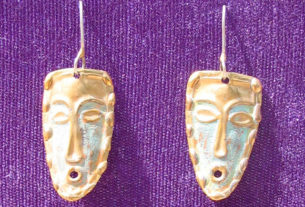During the fall, when the weather changes, so do our culinary aspirations. Cooler temperatures inspire techniques like roasting, baking, braising, and a lot less outdoor cooking in most parts of the Northern Hemisphere.
Mexico, while part of this hemisphere, is far enough south to have the benefit of the southern migration of wildfowl. Several wildfowl are indigenous to Mexico, and migration from northern flocks adds to the diversity of autumn dining.
Adela Fernandez, in writing about the history of Mexican food, tells us that game birds, including turkey, duck, dove, quail, partridge and other small birds were among the most appreciated elements of the pre-Hispanic diet. Although the native Muscovy duck (Cairina moschata) and the turkey (Meleagris gallopavo) were both eventually domesticated by the Aztecs and the Maya, they were originally obtained by hunting and trapping, and later were raised from eggs or chicks found in the wild.
Turkey, and the pre-Hispanic rituals associated with it, along with modern regional recipes, has been discussed in previous columns. This month the spotlight is on duck and quail, two of the current favorites of Latin and Pan- Latin chefs.
While duck seems to have taken a back seat to the esteemed turkey before the arrival of Europeans in the New World, it was nevertheless consumed in many ways and was even reported, by Francisco de Xerez, to have been dried and used as a seasoning powder for soups and stews. (This brings to mind the Chinese dried duck feet, highly favored for use as a stock ingredient.) In Mexico, duck has been traditionally served in pipian, a specialty of the central part of the country, using either pumpkin seeds for green pipian or sesame seeds for red pipian. Outstanding duck tacos, made with either roasted duck or duck confit and served with chopped onion and cilantro, have made their way onto several restaurant menus in Mexico City.
In Guanajuato, a local specialty called pato al lodo – duck in mud -which was a feast day food for the Aztecs, is still prepared the same way as it was centuries ago. The duck is cleaned on the inside, but left unplucked, then stuffed with herbs, onion, garlic and the cactus fruit xoconoxtle and covered with mud. Cooked over a wood fire for two to three hours and left to cool for a short time, the mud coating is then broken with a sharp rap, and off come the feathers with it, an ingenious way to avoid plucking.
Although most people prefer to buy duck already dressed and packaged, duck hunting is popular with tourists from north-of-the-border. From November through March, they arrive to hunt in the northeastern state of Tamaulipas and the northwestern states of Sonora and Sinaloa. Both of these coasts are along the migration routes of several northern species, which flock to these areas that provide the perfect winter feeding conditions of marshland and grain fields. Within a small area of Mexico’s northeastern coast alone, Laguna Madre and Laguna La Nacha are winter habitats of over three million ducks.
Also favored by hunters coming to Mexico are quail, which belong to the family of odontophoridae, or New World quail (as opposed to the phasianidae family of Old World quail, more like pheasant.) The northeastern bobwhite quail ( Colinus virginianus) and the western Mexican banded quail ( Phylortix fasciatus) are among the most popular with hunters.
Quail were favored by the pre-Hispanic people as well, both as food and as sacrificial offerings to Chicomecóatl – “Seven Snakes” – the Aztec goddess of nourishment and corn. Since the goddess received a human sacrifice only once a year, during the September harvest season, presumably quail were highly regarded enough to be considered an acceptable substitute the rest of the time.
In Guerrero, codorniz a la talla – marinated grilled quail – is a favorite, and all over Mexico, quail eggs are a savory delicacy served as a botana – snack – or as an appetizer, in a salad, or even in a soup at elegant dinners.
Many other game birds, most of them small, are found in Mexico. However, several species and sub-species, such as the bearded wood partridge ( Dendrortyx barbatus) of Veracruz and the masked bobwhite quail ( Colinus virginianus ridgewayi) of Sonora, are endangered. Responsible hunting means hiring a government-credentialed guide who recognizes the different species and sub-species, and who will assist tourists in obtaining the necessary hunting license. Responsible hunting also means killing only what you will eat. (The 100-dove-a-day bag limit per person in some areas more or less precludes the idea of “responsible hunting” since even Henry VIII could probably not have put away that many doves.)
Whether you brave the chilly morning mists to hunt your food in the wild, or brave the lines at the supermarket or the crowds at the mercado, try the following recipes for various Mexican preparations of wildfowl.
- Tacos de Pato: Duck Tacos
- Pato en Pipian Rojo: Duck in Red Pipian Sauce
- Codorniz a la Yucateca: Yucatecan Style Quail
- Arroz con Codorniz: Quail with Rice

